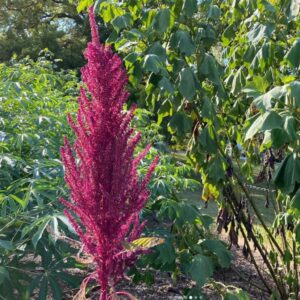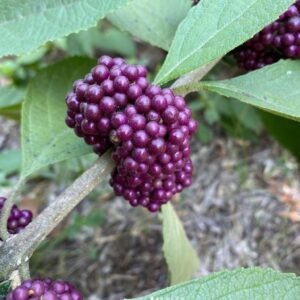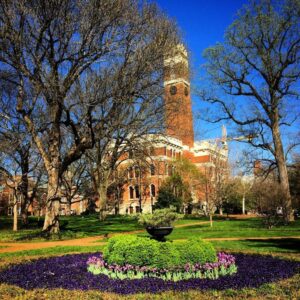Community Gardens
Latin American Garden
The Latin American Ethnobotanical Garden features over 50 species of culturally significant plants from the region. The species housed in the garden reflect CLACX’s particular strengths in Mexico, Central America, Brazil, and the Black Atlantic. The garden contains a number of sages, agaves, as well as exotic plants like cassava, epazote, and night-blooming cestrum. It also features a section of annuals, which contains important food crops such as corn, squash, beans, and amaranth. From May through October, CLACX offers tours of the garden for Vanderbilt courses, student groups, and local school groups; since 2017, over 150 people have toured the garden.
The garden provides an interdisciplinary, hands-on teaching tool for university students, as well as local K-12 educators and their students. It provides a starting point for discussions on a range of topics including relationships between people and plants, diet and health, history and globalization, the importance of indigenous knowledge, and connections between the environment, climate change, and biodiversity. The garden has been the focus of a first-year iCommons Seminar taught by Avery Dickins de Girón; students in the course studied the uses of plants by indigenous peoples in Latin America and produced descriptions of assigned plants. Their descriptions provided the basis for the plant descriptions in the database.
The Latin American Garden is located between Natchez Field and 31st Avenue North, adjacent to Lot 73A, and visible from Blakemore Avenue. Explore the map here.
 FOLLOW THE LATIN AMERICAN GARDEN ON INSTAGRAM
FOLLOW THE LATIN AMERICAN GARDEN ON INSTAGRAM
Historical Medicinal Garden
The Vanderbilt grounds team, in collaboration with Professor Arleen Tuchman, planted a historical medicinal garden on campus as a hands-on teaching resource for students. The plants were selected based on a book by Martha Ballard, an 18th-century midwife and healer. This garden begins to blook in the spring and can be seen throughout the summer.
Community Garden
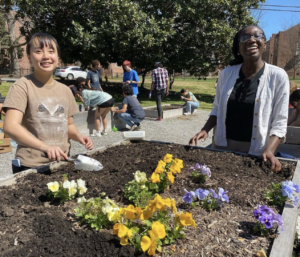
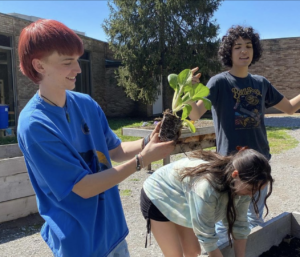
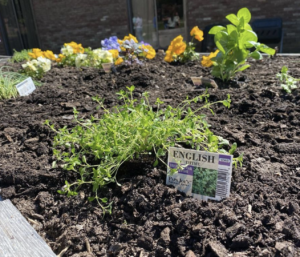
The Vanderbilt Community Garden was transitioned to a new more central location on campus in 2020. The new community garden continues to use the efforts of the Vanderbilt Community Garden student group with support from the Campus Dining and Facilities groups. The garden will include more than just plants and produce, it acts as a testing ground for sustainable gardening methods. The garden is available for use by the broader Vanderbilt community, as well as creating strong ties to the Vanderbilt Children and Family Center which will use the garden as part of their curriculum. Students Promoting Environmental Awareness and Responsibility (SPEAR) currently manages the garden. Photo Credit: @vucommunitygarden
 FOLLOW THE VU COMMUNITY GARDEN
FOLLOW THE VU COMMUNITY GARDEN
Wildflower Designated Areas
There are three wildflower designated areas on Vanderbilt’s campus on Blakemore Avenue, near the Divinity School and along Appleton Avenue behind the newly renovated One Magnolia Building, formerly the Home Economics Building, on the Peabody Campus. The Appleton Native Species and Pollinator Garden is a FutureVU Sustainability green fund project. Students entered the idea for the native species and pollinator garden into the 2021 Greenathon Competition, sharing that they would like to create a garden on campus that contains native plants to Tennessee and Nashville area in order to increase pollination and biodiversity. The Native Species and Pollinator Garden was one of the 2021 Greenathon Winners.
Early spring, these beds are cut back and reseeded, and blooms can be seen in late spring through the fall.
Massey Circle
Originally planted by the Vanderbilt’s Women’s Garden Club, the Massey Circle is the university’s largest annual flower bed. The grounds team plants it twice a year, once in the spring and again in the fall. Typically around 3,000 flowers and plants are planted in this bed. Massey Circle is also involved with student academic research through the Soil Your Undies Project.
James Kirkland, who became chancellor in 1893, was an ardent gardener. He kept a large garden at the chancellor’s residence (the former home of Bishop McTyeire, at the current location of the Student Health Center) and became an ardent breeder of irises. He and several other figures associated with Vanderbilt won Dykes Medals for the varieties that they bred. Chancellor Kirkland’s wife, Mary Henderson Kirkand, was instrumental in founding the Vanderbilt Garden Club, a group of women who were interested in improving the appearance of the campus. The Club was founded in about 1927 and was limited by invitation only to 25 members. Despite Mrs. Kirkland’s involvement with the club, there were occasional conflicts when the Club’s plans clashed with those of the administration. Initially, the Club was focused primarily on planting flower beds and shrubs. In about 1928, Alieen Bishop suggested that the club should follow the example of Bishop McTyeire and add to the trees on campus. From that point through the 1990’s the club was instrumental in planting many trees on campus.
The postwar Garden Club was revitalized by the arrival of Margaret Branscomb, wife of the new Chancellor Harvie Branscomb. The Branscomb administration presided over a massive building campaign and the Club was regularly involved in organizing the planting of trees to beautify the areas around the new buildings in consultation with Superintendent of Grounds Jack Lynn. Major tree-planting efforts included supporting the magnolia screen on the campus perimeter during the 1950’s and plantings around the new Branscomb Quadrangle during the late 1960s. By that time, the campus plantings were coordinated exclusively through Plant Operations and the Garden Club had evolved into a supporting role. The Garden Club continued to meet until the fall of 2006 when it decided to disband given that landscaping on campus was being done by professional crews.
The beautiful circular planting here is a memorial in honor of the work done by the Garden Club, whose most lasting legacy is several of the interesting varieties of trees in the arboretum. The plaque by the memorial says “With Gratitude to the Vanderbilt Garden Club for Campus Beautification. This plaque is placed to express appreciation for the numerous contributions made by members of the Vanderbilt Garden Club for the enhancement of the campus landscape for almost 80 years from 1927 through 2006. The Vanderbilt Community, October 2006”.
